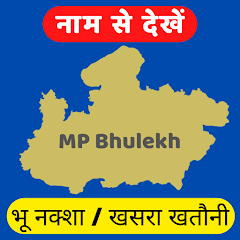Introduction
In a country like India, where agriculture and land ownership play a vital role in people’s lives, having access to accurate and up-to-date land records is essential. Traditionally, land record management in India has been a manual and time-consuming process, leading to delays, errors, and corruption. However, with the advancement of digital technology, many states have taken significant steps toward digitizing land records. One of the most significant initiatives in this direction is the introduction of Bhu Abhilekh portals.
Bhu Abhilekh , also known as online land records or digital land registry, is a government-led effort to provide citizens with easy, transparent, and instant access to their land details. These records include important data such as Khasra numbers, Khatauni, ownership details, land classification, and maps. This article explores what Bhu Abhilekh is, how it works, its benefits, and how you can use it.
What is Bhu Abhilekh?
Bhu Abhilekh (भूमि अभिलेख) literally translates to "land records" in Hindi. It is a digitized version of traditional land records that were previously maintained manually in government offices. With the launch of various state-specific Bhu Abhilekh portals, such as MP Bhulekh in Madhya Pradesh and MahaBhulekh in Maharashtra, citizens can now view their land records online with just a few simple steps.
The goal of these portals is to offer a centralized platform where citizens, especially farmers and landowners, can view, download, and verify their land-related information without the need to visit Tehsil or Patwari offices physically.
Key Features of Bhu Abhilekh Portals
Every state has customized its Bhu Abhilekh portal to suit regional needs, but some of the core features remain the same:
1. Online Khasra and Khatauni Check
These are essential components of any land record. Khasra is the land parcel number, while Khatauni is the record of landowners. Users can check these details online by entering basic information like district, tehsil, and village.
2. Land Ownership Details
You can view the current owner's name, type of land (agricultural or non-agricultural), and any changes in ownership due to inheritance, sale, or government acquisition.
3. Bhu Naksha (Land Maps)
Most portals provide geo-referenced maps that allow you to visually locate your land on a map. This helps in understanding the shape, size, and neighboring plots of the land.
4. Record Download and Print
Users can download and print digitally signed land records which are often accepted as valid proof in various legal and administrative processes.
5. Property Mutation and Grievance Services
Many portals now include online property mutation services and a grievance redressal system where citizens can raise concerns or request corrections in land records.
How to Use Bhu Abhilekh Portal
Let’s take the MP Bhulekh (Madhya Pradesh) portal as an example of how users can access Bhu Abhilekh:
Step-by-Step Guide:
-
Visit the official website – Go to bhu abhilekh
-
Select the service – Choose "Search by Khasra," "Khatauni," or "Owner Name."
-
Enter location details – Select district, tehsil, village.
-
Input your land details – Provide the Khasra number or landowner’s name.
-
View land record – The system will display all relevant land information.
-
Download/Print – You can save or print the record for further use.
Benefits of Bhu Abhilekh
1. Transparency
Digitization reduces the chances of tampering, fraud, or manipulation in land records.
2. Time-Saving
Citizens can access records instantly from anywhere without having to stand in long queues at land offices.
3. Accessibility
Even people in remote villages can access their land records via mobile phones or internet kiosks.
4. Useful for Legal Processes
The records can be used in court, during land sales, for applying for loans, and other property-related legal matters.
5. Support for Farmers
Farmers can easily prove ownership and get access to subsidies, insurance claims, and agricultural loans.
Challenges in Implementation
While Bhu Abhilekh has been a success in many states, there are still some challenges:
1. Internet Accessibility
Rural areas still struggle with consistent internet access, making it hard for all citizens to use these services.
2. Digital Literacy
Not all citizens, especially the elderly or less educated, know how to use digital portals.
3. Data Accuracy
There are still some inconsistencies in digitized records due to old data or clerical errors during the digital conversion process.
4. Technical Glitches
Occasional server downtimes or bugs in the portal can cause delays and user frustration.
Government Efforts and Future Scope
The Indian government has integrated Bhu Abhilekh into broader initiatives like the Digital India Land Records Modernization Programme (DILRMP) . The goal is to create a National Land Records Database that combines land record data with satellite-based mapping for even more accurate and accessible records.
Some future goals include:
-
Integration with Aadhar and e-KYC
-
Mobile apps for land record access
-
Real-time land mutation updates
-
AI-based fraud detection in land ownership transfers
Conclusion
Bhu Abhilekh is a groundbreaking step in India’s journey toward digital governance and land record transparency. By moving land records online, state governments have made a significant impact on reducing corruption, improving public access to information, and empowering citizens—especially in rural and agricultural communities.
Though there are still hurdles to overcome, the progress so far has been promising. With increased digital literacy and better infrastructure, Bhu Abhilekh can truly become the backbone of land administration in India.
Whether you are a farmer looking to verify your land ownership or a property buyer checking land status before a purchase, Bhu Abhilekh provides a fast, secure, and efficient way to get the information you need—right at your fingertips.

